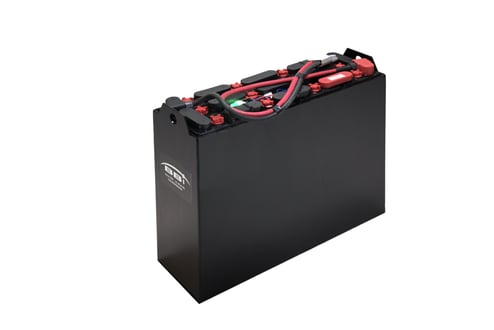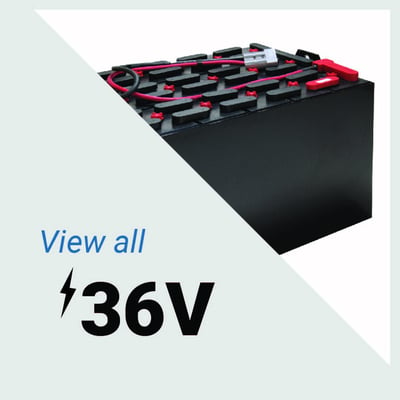
Forklift Batteries Inspection Checklist
When it comes to the smooth operation of any warehouse or manufacturing facility, forklifts play a vital role. These machines are indispensable for moving heavy loads, and their efficiency heavily relies on one key component: the forklift batteries. Regular inspection and maintenance of these batteries not only prolong their lifespan but also ensure safety in the workplace. In this article, we'll dive deep into a comprehensive Forklift Batteries Inspection Checklist, ensuring you have everything you need to keep your equipment running smoothly.

Understanding Forklift Batteries
Forklift batteries are typically lead-acid types, known for their robustness and reliability. However, like any other machinery component, they require regular checks to function optimally. Ignoring battery maintenance can lead to performance forklift batteries issues, safety hazards, and even costly downtime.
Types of Forklift Batteries
There are several types of batteries used in forklifts today:
- The most common type found in forklifts.
- Cost-effective and reliable but require regular maintenance.
- Gaining popularity due to faster charging times and longer life.
- Requires less maintenance compared to lead-acid counterparts.
- Used less frequently but offer high discharge rates.
- More expensive but can be suitable for specific applications.
Understanding the differences between these types is crucial when developing a proper Forklift Batteries Inspection Checklist. Each type has unique 24 volt flat plate forklift batteries requirements that must be adhered to for safe operation.
Why Inspect Forklift Batteries?
Regular inspections are essential for various reasons:
- Safety: Faulty batteries can pose serious risks such as acid leaks or explosion hazards.
- Performance: Well-maintained batteries ensure your forklift operates efficiently, reducing energy costs.
- Longevity: Just like any other equipment, proper care extends battery life.
So, how often should you inspect your forklift batteries? The general rule of thumb is at least once a month; however, daily checks during operations can help spot minor issues before they escalate.
Forklift Batteries Inspection Checklist
Now that we've established why it's essential to inspect forklift batteries let's explore what that checklist should entail.
Daily Inspection Items
- Inspect for any physical damage or corrosion on terminals.
- Look for signs of leakage around the battery casing.
- Ensure electrolyte levels are adequate; refill with distilled water if needed (but only after charging).
- Keep the battery terminals clean and free from dirt and dust which could affect connectivity.
- Check all connections to ensure they’re tight and secure; loose connections can lead to poor performance.
- Verify if the battery has been charged correctly; undercharging or overcharging can severely reduce lifespan.
Weekly Inspection Items
- Use a hydrometer to check specific gravity levels in each cell; significant discrepancies may indicate problems.
- Monitor the temperature during charging cycles; excessive heat could signal an issue with either the charger or battery itself.
- Inspect the outer casing for cracks or signs of wear which might lead to leaks.
- Ensure vent caps are intact as they prevent gas build-up during charging.
Monthly Inspection Items
- Conduct a more thorough visual assessment of wiring harnesses and connectors for wear and tear.
- If possible, perform a load test to assess the current capacity versus its original specifications.
- Ensure that the charger is functioning properly by inspecting connections and testing output voltage against specifications.
- Keep records of inspections and repairs as part of preventative maintenance schedules.
| Frequency | Inspection Item | Description | |-----------|------------------------------------|-------------------------------------------------------| | Daily | Visual Check | Look for damage or leaks | | Daily | Fluid Levels | Ensure electrolyte levels are sufficient | | Daily | Cleanliness | Remove dirt/dust from terminals | | Daily | Connection Points | Tighten loose terminals | | Daily | Charging Status | Check battery lead-acid forklift batteries charge level | | Weekly | Electrolyte Specific Gravity | Measure fluid density | | Weekly | Temperature Check | Monitor heat during charging | | Weekly | Battery Case Integrity | Inspect casing for cracks | | Weekly | Vent Caps | Verify caps are secure | | Monthly | Detailed Visual Inspection | Thorough examination of all components | | Monthly | Load Test | Assess current capacity | | Monthly | Check Charger Functionality | Test charger output | | Monthly | Documentation Review | Maintain records of maintenance activities |
FAQs About Forklift Battery Maintenance
1. How often should I inspect my forklift batteries?
You should conduct daily inspections during use, with more thorough weekly and monthly checks based on our Forklift Batteries Inspection Checklist.
2. What happens if I don't maintain my forklift batteries?
Neglecting maintenance could lead to reduced efficiency, shortened lifespan, safety hazards like leaks or explosions, and costly downtime due to unexpected failures.
3. Can I charge my forklift battery overnight?
Yes, many modern chargers have automatic shut-off features that prevent overcharging overnight; however, always refer to manufacturer guidelines for best practices.
4. How do I know when my forklift battery needs replacing?
Signs include reduced lift capacity, frequent need for recharging 12 volt flat plate forklift batteries within short periods, visible physical damage like swelling or corrosion, or age beyond its expected lifespan (typically 5-7 years).
5. What type of water should I use when refilling batteries?
Always use distilled water when topping off liquid in lead-acid batteries; tap water contains minerals that can harm battery performance over time.
6. Is it safe to work on a forklift while it's being charged?
No! It's crucial never to work on forklifts while being charged due to electrocution risks from exposed wires or accidental short circuits.
In summary, maintaining your forklift's power source is just as important as checking its mechanical components like brakes and tires! A well-kept Forklift Batteries Inspection Checklist not only boosts productivity but also safeguards employees against potential dangers associated with faulty equipment.
This article serves as an essential guide in understanding how vital consistent monitoring is—so roll up those sleeves! Keeping those forklift batteries in top shape will pay off big time in both longevity and operational efficiency!